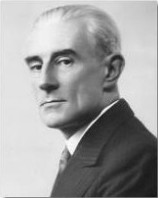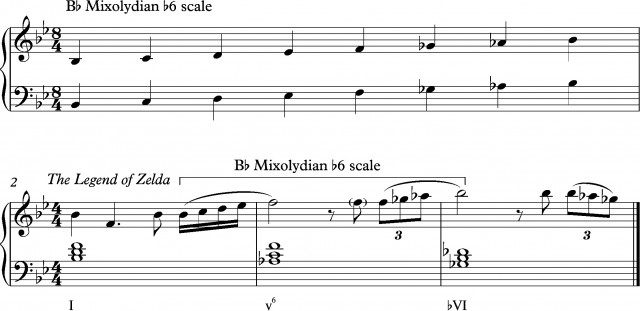The Legend of Music #02: Koji Kondo’s Masterpiece
Posted on April 01 2012 by Mases Hagopian
In the late 1980’s, Nintendo made what would become one of the longest standing video game franchises to date: The Legend of Zelda. The NES title that started it all became a bestseller for Nintendo and it was the first NES game to sell over 1 million copies. Along with The Legend of Zelda came one of the most iconic pieces of video game music ever written: The Legend of Zelda theme that manifests itself in both the title screen music, as well as the in-game overworld music. But what is the origin of this theme, and why has it become so popular? Join me after the jump as I explain and explore some of the legend behind the music itself.
Koji Kondo vs. Maurice Ravel?
There are a lot of people who don’t know, but The Legend of Zelda title screen music on the NES was not the original music. The intended music for The Legend of Zelda’s title screen was actually an arrangement of Maurice Ravel’s Boléro (If you don’t know it, go here). However, late in the game’s development Koji Kondo found out that that Ravel’s masterpiece was still under copyright (published in 1929 by Parisian firm Durand) and could not be used in the game for legal reasons. Koji Kondo then composed the title screen music that we all know and love, and he did it in one day.
Now, despite the fact that Koji Kondo’s one-day-masterpiece was a backup plan to Ravel’s Boléro, I believe it serves the nature of the game much better than Boléro would have. Don’t misunderstand me; I do not mean to say that Boléro is not well written. My point is that Boléro wouldn’t have served the character of the game very well.
The Boléro, and why it has no business in a Zelda game
 Firstly, let’s look at the Boléro itself. The piece repeats the same theme over and over, and each repetition is accompanied by a growth in the orchestral texture. Each repetition also features a different instrument, or instrument group, playing the theme. The theme itself is extremely elegant and long winded. There are very few breaks the in melody which gives it a feeling of fluidity and serenity. Boléro is actually written in the style of a Spanish dance. The piece very obviously conveys the idea of a dance and while Boléro may be a stand-alone orchestral piece in today’s concert halls, it was originally commissioned as a ballet.
Firstly, let’s look at the Boléro itself. The piece repeats the same theme over and over, and each repetition is accompanied by a growth in the orchestral texture. Each repetition also features a different instrument, or instrument group, playing the theme. The theme itself is extremely elegant and long winded. There are very few breaks the in melody which gives it a feeling of fluidity and serenity. Boléro is actually written in the style of a Spanish dance. The piece very obviously conveys the idea of a dance and while Boléro may be a stand-alone orchestral piece in today’s concert halls, it was originally commissioned as a ballet.
Elegance, fluidity, and serenity are three of the main qualities of Boléro‘s melody. They are also three qualities that I do not associate with The Legend of Zelda. The Legend of Zelda is an adventure. It is a hero’s tale; it is a legend. It is not a ballet; it is not an expression of the beauty of the human body through movement (and no, this does not count). The Legend of Zelda was inspired by Miyamoto’s adventures in the wilderness around Sonobe, Japan when he was a child. I doubt that the caves and lakes he explored were very elegant or refined places.
The one-day-masterpiece; Koji Kondo’s backup plan
Now let’s take a look at the title screen music (click here for a refrence) that we recognize as the main theme to The Legend of Zelda. When gamers first saw the title screen to The Legend of Zelda, what did they hear? It might surprise you, but it actually wasn’t the main theme to The Legend of Zelda; the theme doesn’t start until about 10 seconds later. What they heard was a short 10 second introduction. They heard a short musical idea that had no other purpose than to set you up for the main theme. In short, this introduction is the musical equivalent of starting a story with “once upon a time.” Before you even get to play the game, the aesthetic has already been established that this is more than a story, it is a legend.
After this introduction, the main theme finally begins. The theme, unlike Ravel’s Boléro, is not constructed using a traditional scale (simply put, a scale is an arrangement of notes that can make harmonies or melodies in a piece of music). The closest scale that captures the variety in the melody would be a “Mixolydian flat 6” scale, which actually originated out of jazz. I’m not going to go into the details of it, but it contains elements of a variety of different scales. The use of this scale gives the theme uniqueness and a sense pan-emotionalism (ability to convey a variety of conflicting emotions). By using this scale, Koji Kondo was able to not only create a unique and identifiable piece of music, but also a piece that paralleled the ruggedness of adventuring.
This is a Mixolydian flat 6 scale (in the key of the theme) and the first few measures of the theme itself. Notice the bracketed area:
Aside from the notes themselves, there is a background rhythm. This rhythm, which accompanies the entire theme, is very similar the rhythm of a horse gallop and is a very common rhythm in The Legend of Zelda music. While link doesn’t actually have a horse in the NES title, the mere presence of the rhythm already establishes an adventurous feel that is commonly associated with riding a horse.
The Influence of Boléro on The Legend of Zelda
Okay, so I spent quite a bit of time arguing how Boléro has no place in The Legend of Zelda, but that does not mean the Koji Kondo was not influenced by it. It’s a reasonable connection to make if you think about it. Koji Kondo wanted to have Boléro as the title screen music, so it’s only natural that when he was forced to write a replacement, that he use certain elements from Boléro. I’ve heard several people say that the two are very connected; however I would not go so far. The way I see it, the two pieces are structured differently in form, harmony, melody, and intention. Despite that, there is one potential connection that I found between the two that I’d like to bring up.
Firstly, let’s have a look at the underlying rhythm in Boléro (again, go here for a reference):





~~~Recent Content Updates~~~
- Skyward Sword Bosses
- Skyward Sword Bottles
- Skyward Sword Bugs
- Skyward Sword Characters
- Skyward Sword Enemies
- Skyward Sword Equipment
- Skyward Sword Goddess Cubes
- Skyward Sword Gratitude Crystals
- Skyward Sword Items
- Skyward Sword Official Artwork
- Skyward Sword Pieces of Heart
- Skyward Sword Screenshots
- Skyward Sword Story
- Skyward Sword Treasure
- Skyward Sword Upgrades
- Skyward Sword Video Walkthrough
- Skyward Sword Walkthrough
- The Minish Cap Walkthrough
~~~Recent Wiki Articles~~~





